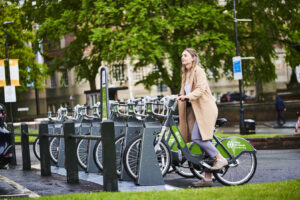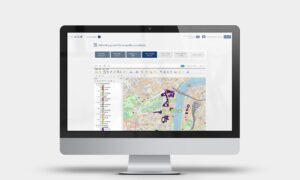Real-world compliance with Euro 6 ‘perfectly possible’
It is “perfectly, technically possible” for vehicle manufacturers to meet Euro 6 emission standards under real world driving test procedures, according to the chief executive of UK firm Emissions Analytics.

(L-R) KCL’s Gary Fuller and Emissions Analytics’ Nick Molden appeared at the conference today (Photo: KCL)
However, Nick Molden — who founded the Winchester-based company in 2011 and has since carried out real world driving emissions tests on nearly 1,000 vehicles — said that while the technology exists for manufacturers to meet Euro 6 air pollution standards in the real world, it was up to policy makers to push them to do so.
His comments came today (July 2) during a presentation on measurements of tailpipe emissions from passenger cars at an air quality conference organised by King’s College London (KCL).
Even using real-world testing, Mr Molden said: “It is perfectly, technically possible for manufacturers to meet the Euro 6 standards — it is just about being given the incentives to do it.”
The UK motor-industry is currently counting down the final weeks until the all new cars registered in Europe have to meet Euro 6 emissions standards from September, but these EU regulations are currently assessed through laboratory testing rather than based on real-world driving on roads.
Mr Molden said that early results were mixed from real world testing of new Euro 6 compliant vehicles, but that the prospects for overall improvements in emission reductions from Euro 5 vehicles were “very good”.
However, he added that there were still great differences in the real world emissions results from different Euro 6 cars, explaining that based on testing carried out so far by Emission Analytics both the mean (average) and spread (from highest to lowest) of NOx emissions from Euro 6 vehicles has increased in comparison to Euro 5 vehicles.
He said: “There is significant variability from vehicle to vehicle, which is a great conundrum for manufacturers.”
Ozone
The Local Air Quality Network (LAQN) seminar had earlier heard from KCL principal air quality officer Tim Baker, who gave an overview of air quality trends in London in recent years. KCL collates the data from monitoring stations in the capital in partnership with boroughs and several Business Improvement Districts (BIDs) on the London Air website.
Mr Baker suggested that early evidence from last year showed that nitrogen dioxide levels on Marylebone Road — on which the monitoring station which is used to report London air quality compliance to the European Union — are continuing to reduce “rapidly”, but that more research was needed to understand this.
However, Mr Baker revealed that ground-level ozone was increasing in the capital, predicting that “ozone is going to become more of an issue within London”.
And, referring to the moderate-to-high ground-level ozone pollution which hit the UK yesterday (see AirQualityNews.com story), Mr Baker said early indications from yesterday’s data were that ozone levels in London were probably the highest recorded since just before the 2012 Olympics.
He also explained that yesterday’s episode was unusual because pollution levels appeared to increase, rather than drop, during the night time.
He said: “The honest answer is that it surprised us as well. Generally, ozone rises during the day and drops again at night, but here we saw it rise during the night.”
Business
Also speaking at the event, KCL senior air quality analyst Andrew Grieve praised the work of Business Improvement Districts (BIDs) and their more recent addition to the London Air Quality Network alongside borough councils. BIDs are generally a group of businesses in a particular area which have come together with the aim of improving the local environment for workers and shoppers.
Mr Grieve said: “We have found that businesses are engaged already and are willing to be part of the air quality solution. It allows us to provide a resolute evidence base for continued air quality investigations.”
Elsewhere, former Labour Minister of State for Science and Innovation, Lord Drayson, presented the latest project of his company Drayson Technologies, which is launching a new scheme this summer which rewards London residents for behaviours which positively impact on air quality.
The ‘CleanSpace’ scheme is currently still in its beta testing phase, but Lord Drayson said that incentives could include rewarding hybrid drivers with points for charging their vehicle, which could then be spent on a variety of consumer items.












